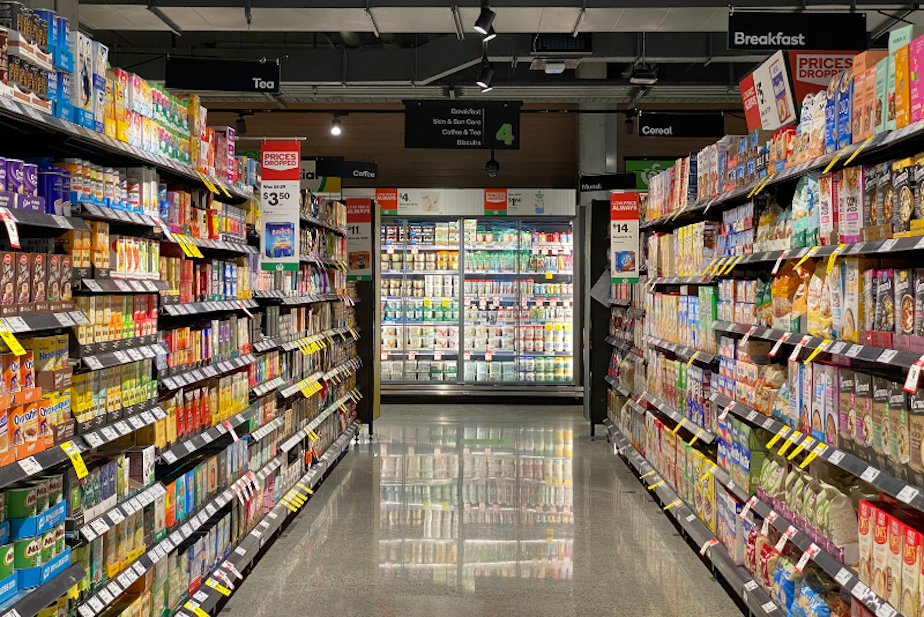When it comes to managing food costs, flexibility is key

If you’ve changed your grocery shopping habits because of rising food prices, you’re not alone. Businesses are adjusting too. Here’s a look at how everyone is trying to cope.
Restaurants have had to pivot a lot in the past few years. First, it was the pandemic restrictions. Then it was staffing shortages, or supply chain issues. Lately, they’re dealing with inflation.
“Wholesale food prices has gone up 15.6 percent,” said Anthony Anton, president and CEO of the Washington Hospitality Association. He says it’s hard to cut back since the high prices affect basics like chicken, dairy, fruits, flour, and fats and oil.
Even so, Anton notes menu prices have only gone up half as much. And that eats into restaurants’ already thin margins. He says they don’t want to go too far in raising prices or they risk losing customers. Instead, they’re finding ways to keep costs down such as closing on days that are not usually profitable.
Supply shortages are also still an issue, so businesses try to come up with a backup plan.
“We’re not sure what’s going to show up on the truck on a Thursday to serve you on a Friday,” Anton said. “If this doesn’t show, what do I put on the menu instead?”
Sponsored
It’s one reason why you may have noticed smaller menus at some restaurants.
“You’re seeing a menu fluidity or flexibility that we haven’t seen before,” Anton said.
Flexibility is key—not just in restaurants, but at home, too.
Seattle food writer Jill Lightner said we have our go-to household staples. Maybe it’s brown lentils. But if green lentils are on sale, buy them.
“You’ll be able to find a way to use them and they’ll be delicious,” said Lightner, the author of “Scraps, Peels and Stems,” a book about reducing food waste.
Sponsored
Eating less meat and more vegetables is one way to cut food costs. Lightner suggested eating every part of the vegetable. Let’s say you have a head of cauliflower.
“I’m going to roast the florets, almost making like little delicious French fries," she said. "Also, lots of people like to turn the florets into cauliflower rice.”
And those chunky stems? Don’t throw them out — they’re edible.
“Those can be chopped up finely and used in salad,” Lightner said. “And those leaves, cauliflower leaves have this mild, delicious mild flavor. They can be roasted on a sheet pan for a few minutes at a time, drizzled with something and you have this tasty side dish.”
For Lightner, using every part of the vegetable is more than just about being frugal. It’s about reducing food waste.
Sponsored
The Environmental Protection Agency estimates that one third of food in U.S. goes uneaten — much of it ends up in landfills. Preventing food waste is an easy way to save money and lower our climate impact.
“We tend to equate budget cooking with making do with less flavor and with disappointing meals and that just doesn’t have to be the case at all,” Lightner said.
It means keeping an open mind to possibilities.
Now that it’s corn season, when you’re done scraping off the kernels, don’t throw away the corn cobs. You can make a quick stock with those. In a pot, add a couple of garlic cloves, some herbs and water. And let them simmer.
“You can freeze that so in the middle of winter you can have fresh corn chowder with fresh corn stock and it will taste good and summery,” Lightner said. “You can use some cheap potatoes and maybe like a slice of bacon and you’ll have the best corn chowder of your life.”
Sponsored
Lightner points out these ideas are not entirely new. This is a good time to lean into the kitchen wisdom of our parents and grandparents who, in their time, had to be creative with less. And like previous generations, we’ll get through it.




